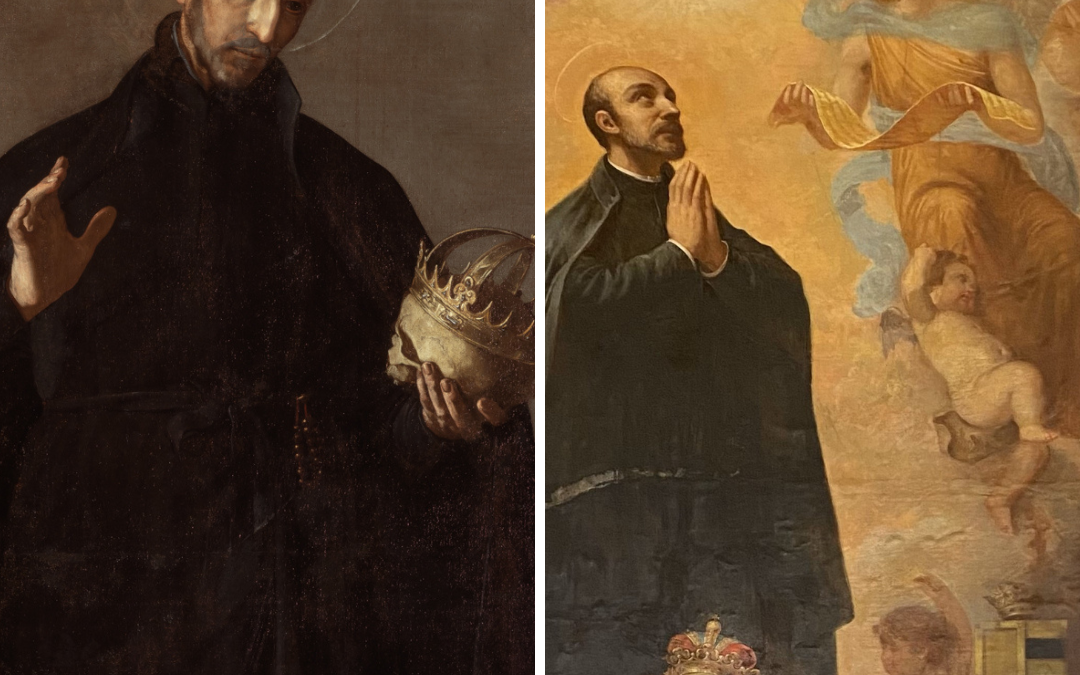Last Saturday 28 October marked the 513th anniversary of the birth of Francisco de Borja in the Palau Ducal. On that same day, we took the opportunity to share an ephemeris on our social networks about the problems that his arrival in the world entailed. Something not insignificant for the time, as births used to be quite complicated and the life expectancy of a newborn baby was reduced. Even so, in this article we are going to deal with the figure of Francisco from another point of view and away from his years as Duke of Gandía.
Today we have a lot of information about one of the most international characters of the family, with the permission of the two Borgia Popes of the 15th century. We are talking about a man who lived the Renaissance of the Cinquecento and the Arts, skilled with the sword and also light with the pen (which facet we will talk about in future publications).
We know, for example, that the teaching of the young Francisco was taken over, in part, by his grandfather and archbishop of Saragossa, Alonso de Aragón. He also lived through the events that took place in Gandía in 1521, when Francisco fled the city on 21 July with his family because of the rebellion of the troops of the Agermanados, causing the Palau Ducal itself to be looted.
A year later he was sent to Tordesillas, where the legitimate Queen Joanna I, unfortunately nicknamed “the Mad”, was living in seclusion. It was during this period of time that Francisco was able to meet another of his relatives, Emperor Charles V, in person. Following this meeting, Francisco soon became a prominent man at Court, becoming the equerry to the Empress Isabella of Portugal at the age of 18 and executor of the emperor’s will.
There he met Leonor de Castro, the empress’s Portuguese lady-in-waiting, and Francisco’s future wife a year later. After the marriage ceremony, the emperor elevated the barony of Llombai to a marquisate as a wedding gift. His destiny at Court was to be linked, frankly, to the life of the empress until her death on 1 May 1539.
After that, Francisco de Borja would serve the emperor again, away from the Court, as viceroy of Catalonia. It was during this period that he met the first Jesuits and future companions of the newly created religious order in 1534 by Ignatius of Loyola.
We could say that these were the beginnings, the seed, of the Society of Jesus. It is curious how many of the visitors we receive each week from Catalonia point out to us, on more than one occasion, some historical fact related to those first Jesuits or parallel constructions. That is why, in this article, we will focus on his time as a Jesuit, more specifically as the third superior of the Society of Jesus. To do so, we are going to highlight one of the best-known images of our protagonist, and link it to another pictorial work that can be found in the Golden Gallery of the Palau Ducal de Gandía.
Firstly, we refer to the work by the Granada painter Alonso Cano, portraying Francisco de Borja in the last years of his life. It is very likely that this painting was made to commemorate his beatification, as it is dated 1624 (Figure 1).
The work in question was for a long time attributed to the great Spanish Baroque master Francisco de Zurbarán until 1810. It was originally in the chapel of the novitiate of the Society of Jesus in Seville, where there is also a beautiful altarpiece dedicated to the saint, but later during the Confiscation it became part of the collections of the Museum of Fine Arts in the same city. Stylistic and compositional resources of other Sevillian artists such as Martínez Montañés or Francisco Pacheco himself, father-in-law and master-painter of the great Diego Rodríguez de Silva y Velázquez, can clearly be appreciated. It is here that Alonso Cano recreates a tenebrist painting with a sense of chiaroscuro towards those elements that really come to the fore in the painting: the crowned skull and the three red cardinal’s capitals. Both are attributes of the saint, so that we can also identify Saint Francis Borgia as the third superior of the Society of Jesus (1565-1572). Unlike the other work we are going to analyse below, which is in the Palau Ducal de Gandía, the artist from Granada situates the scene in an earthly space without many more elements than necessary.
In contrast, the work located in the Hall of Glorification in the Golden Gallery is an allusion to the mystical apotheosis and heavenly ascension of a Saint Francis Borgia represented with his own attributes, accompanied by a series of elements such as the coat of arms of the Borja and Oms-Fenollet family. This helps us on guided tours to explain Gaspar de la Huerta’s painting in the same room (Figure 2).
Unlike the painting by Alonso Cano, in this work we see a clairvoyance of colour and ornament surrounding the saint in a totally celestial space. The musician angels to the left of Francis play the lute and harp, while the little angels, also called cherubs or putti in Italian artistic language, hold the attributes of Francis of Borgia. All of them create a sense of horror vacui or horror of emptiness and elevate the figure of the saint to the highest point.
It is true that there are many other works that we have not mentioned, each one more human or not, but all of them tend to have exaltation purposes with a high religious component. For this reason, and by way of conclusion, we invite the reader to reflect on the power that these images had in the society of the time in which they were executed.





Recent Comments